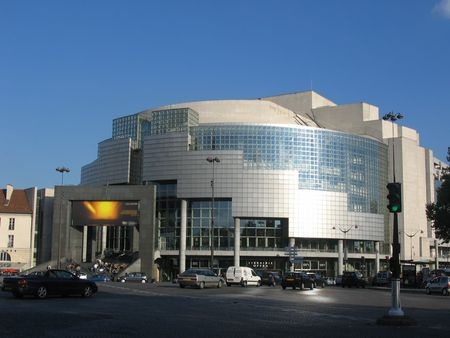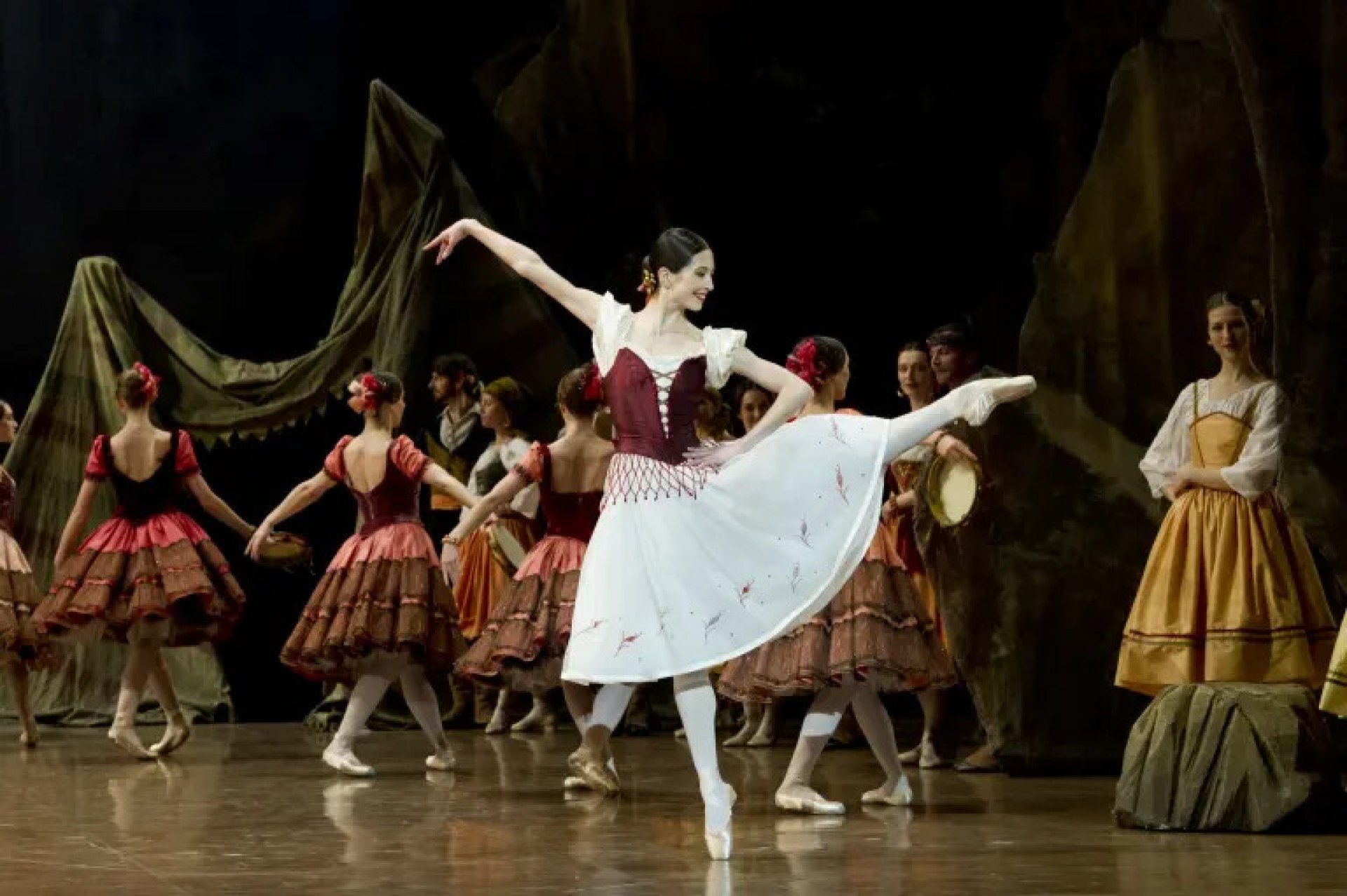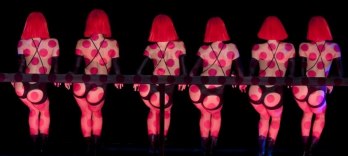Paquita
Mo | Tu | We | Th | Fr | Sa | Su |
“When I recreate a ballet, I search for the fragrance of the period”, said dancer and choreographer Pierre Lacotte, who died in 2023. In Paquita, that perfume is the heady scent of Spain, mixed with elegant French fragrances.
In the Valley of the Bulls, near Saragossa occupied by Napoleon’s armies, Paquita, a young gypsy girl, refuses the advances of an aristocrat, Lucien d’Hervilly, because of her modest condition. But when she saves him from a plot hatched by the Spanish governor, she discovers that her origins are far nobler than she thought…
Pierre Lacotte, a lover of the Romantic repertoire, reconstructed Joseph Mazilier’s ballet in 2001. The work had enchanted Théophile Gautier when it premiered at the Paris Opera in 1846 but gradually fell into oblivion despite Marius Petipa’s new version in 1882. With its sumptuous sets and costumes, his Paquita portrays a picturesque Spain combining mime and characterful dances with dazzingly vivacious virtuoso technique.
Detail of acts
First part
Act 1
First scene The valley of the Bulls in the neighbo urhood of Saragossa
A mason is seen chiselling an inscription on a marble tablet. Enter a French General, the Comte d’Hervilly, accompanied by the Spanish Governor, Don Lopez, and his sister, Seraphina. The General’s son, Lucien, escorts his mother. The Comte d’Hervilly explains that the tablet is erected in memory of his brother who, some years ago, was killed on this spot. A village festival is about to take place. Don Lopez does the honours of his country while the General takes Seraphina’s hand and places it in that of Lucien.
She offers no opposition, but her father’s manner suggests resignation from political necessity rather than approval. Gay music heralds the arrival of a company of gypsies. Iñigo, the chief, has set his heart on Paquita. She appears. (Paquita draws from her bosom a miniature which she believes to portray her father). At the conclusion of the gypsy dances, Paquita passes the tambourine round. In the course of her collection she makes a great impression on Lucien. He questions Paquita, and cannot believe that she was born among the gypsies.
She wishes to show him the miniature, but Iñigo, anticipating the conversation, has filched it. Lucien proposes that she go with him. But, mindful of the distance that separates a gypsy from an aristocrat, she declines. The Governor tells Iñigo that he may kill Lucien with impunity, and he has a plan. He asks the villagers to offer a tribute in the form of flowers, but he retains Paquita’s posy which he gives to a young gypsy-girl, with certain instructions. The girl hands Lucien Paquita’s posy : he takes it as a promise for a rendez-vous and leaves to rejoin Paquita.
Second scene The interior of a gipsy dwelling
Paquita is alone, dreaming of the officer whom she will probably never see again. Iñigo enters with a cloaked man who, on removing his mask, proves to be the Governor. Paquita overhears their conversation. She wants to inform Lucien of their plot. There is a knock at the door and Lucien enters. He asks Iñigo to accord him shelter for the night. Paquita makes signs to warn Lucien of the imminent danger. Iñigo invites Lucien to sup and pours out a glass of wine for his guest.
Paquita gives Lucien to understand that it is drugged, and she changes the glasses. Iñigo, at the same moment becomes drowsy and sinks into his chair. He drags at his clothes the better to breathe and Paquita’s miniature falls on the table. She seizes it. Paquita has an idea : she and Lucien stand against the wall which, turning on its axis, transports them outside.
Second part
Act 2
A ballroom in the residence of the French General
The Comte d’Hervilly appears with Seraphina and the Governor Don Lopez. The General’s wife, who accompanies them, is alarmed at Lucien’s non-arrival. Suddenly Lucien appears with Paquita. He describes the danger he has escaped, and declares that he owes his life to Paquita’s courage and devotion. Paquita catches sight of the Governor and, recoiling in horror, announces that he bribed the men to murder Lucien. At this revelation the Governor is placed underarrest. arrest.
Paquita wishes to take flight when she comes face to face with the portrait on the wall. She draws out the miniature and, comparing the portraits, finds that they are alike : the officer is her father. She is the sole survivor of the massacre in the valley of the Bulls!
Program and cast
Ballet in two acts
Creative team
Pierre Lacotte - Choreography
Édouard Delvedez - Music(1817-1897)
Ludwig Minkus - Music(1826-1917)
Paul Foucher - Libretto
Joseph Mazilier - Libretto
Mikhail Agrest - Conductor
Luisa Spinatelli - Set design and Costume design
Philippe Albaric - Lighting design
With the Paris Opera Étoiles, Premières Danseuses, Premiers Danseurs and Corps de Ballet
With the participation of students from the Paris Opera Ballet School
The Paris Opera Orchestra
Paris Opera Bastille

RM Europa Ticket GmbH is an officially accredited ticket reseller of/by Opera National de Paris.
Agency number: 4848428
Opéra Bastille
A great modern theatre
The Opéra Bastille is the work of the Canadian-Uruguayan architect Carlos Ott, who was chosen in November 1983 after an international competition that attracted entries from some 1,700 architects. The theatre was inaugurated on July 13th 1989.
Its architecture is marked by transparent façades and by the use of identical materials for both the interiors and the exteriors.
With its 2,700 acoustically consistent seats, its unique stage facilities, its integrated scenery, costume and accessory workshops, as well as its numerous work areas and rehearsal rooms, the Opera Bastille is a great modern theatre.
Stage facilities
Orchestra pit, mobile and adjustable, can be covered; at its largest it can house 130 musicians
Main stage, 45 m high, 30 m wide, 25 m deep, made up of 9 elevators allowing several levels to be created and supported by three main elevators, which bring scenery up from below stage
Clearing zones, 4 storage areas with the same dimensions as the stage
Backstage area, with its scenery turntable
Circulation area, scenery temporarily stored between the stage, workshops and rehearsal stage
Rehearsal stage, the Salle Gounod, with its orchestra pit and dimensions identical to those of the main stage
The building
Area at ground level: 22,000 m²
Floor area: 160,000 m²
Total height: 80 m (including 30 m below street level)
The auditoriums
The main auditorium
Area: 1,200 m², 5% of the total for the building
Dimensions: 20 m high, 32 m deep, 40 m wide
Number of seats: 2,703
Materials: blue granite from Lannelin in Brittany, pearwood from China, glass ceiling
The amphitheatre
Area: 700 m²
Depth : 21.4 m
Number of seats : 450
Materials: white breccia marble from Verona, staff ceiling
The Studio
Area: 280 m²
Depth: 19,5 m
Number of seats: 237
Materials: white breccia marble from Verona and pearwood
Performances: Mo 13 May 2024,
Performances: Mo 13 May 2024,
Performances: Mo 13 May 2024,
Performances: Th 16 May 2024,
Performances: Su 26 May 2024,
Performances: Th 16 May 2024,

 EN
EN DE
DE IT
IT FR
FR ES
ES RU
RU JP
JP RO
RO
 Seating plan
Seating plan 






